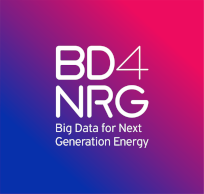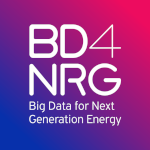[Georeferenced power system modeling and analysis utilizing the geo-server]
Cluster / Demo area
Southern cluster / Greek demo.
Type of service: Detailed power system analysis with Geographic Information system (GIS) implementation.
Power system analysis on the selected region (Crete island and Peloponnese) including both TSO and DSO grid simulation models that will be available,
Geographic visualization of simulation results. Exposing results and linking to other services being developed under f-channel via GIS technologies.
Service can be used in any use case which is related to displaying and querying geographical data and power system simulations.
Technical details: GIS technology integrates common database operations such as query and statistical analysis with the unique visualization and geographic analysis benefits offered by maps. These abilities distinguish GIS from other information systems and make it valuable to a wide range of public and private enterprises for explaining events, predicting outcomes, and planning strategies. Spatial query is implemented for purpose of easier calculation and better User Experience.



Georeferenced deep/vertical grid modeling: In order to allow for deep grid analysis, it is necessary to model the system to the lowest level entity, DSO MV/LV substation (e.g. 10/0.4 kV) or a commercial/industrial/residential building possessing its own MV/LV substation. Entity’s model depends on the entity demand behavior (depending on the weather forecast and historical data) and the total power generated by the distributed energy resources (DERs) connected to it (again highly dependent on the weather and historical data). The latter is affected by: the type of each DER, weather forecast data, geographical data (GPS coordinates of DERs), DER network topology data, their availability data, etc. Task will be to develop a model of the network starting from these lower level entities for the predefined set of Points of Interest and then to provide different levels of aggregation for the higher level users DSO, TSOs, and/or RSCs.
All information collected on all mentioned modelled levels is intended for TSO’s and DSO’s better operational planning through congestion management and balancing reserves need and availability forecasting.
Our approach which we would like to develop and test is based on “intra” oriented mechanisms, offering an adding value to other ongoing approaches related to congestion management and energy balance issues, dealing with “inter” oriented mechanisms: inter aerial, inter TSOs or even inter regional Pan-European mechanisms. These inter oriented approaches are obviously necessary and they result in better utilization of the available energy reserves, but they neglect additional resources of energy reserves and congestion relief measures that origins in the lower voltage levels (in DSOs and further, deeper in the system, on the node level).
Figure 5 contains a topology connection graph showing directions of both aggregation and information flow which should be developed. It is obvious that the proposed model that should be developed possesses a higher resolution than the existing ones, enabling improved operational planning especially on TSO and RSC levels and offering congestion management engine for both grids, DSO and TSO operated. The same model can be applied for any type of a micro grid, being in parallel or in an island operation with the rest of the system.

Addressed to:
Potential applicants are ICT and Energy consultancy companies with relevant expertise in field of GIS implementation and power system analysis and simulations. Experience in Spatial database implementing is also mandatory.
Description of the scenario
Initiative:
Exact Workflow GIS software and hardware are to be implemented on EIG existing infrastructure. Relevant data to be presented to user are grouped in layers which are presented to Third party for purpose of service development. During development several checkpoints/milestones are to be identified and verified.
Expected outcome: Fully functional GIS server incorporated with the comprehensive power system analysis toolbox on EIG infrastructure with possibilities for further development and maintance by EIG.
Important information for applicants:
https://www.esri.com/en-us/arcgis/open-vision/initiatives/standards-specifications
Third Parties benefit from getting involved in the scenario:
Gaining experience in energy sector. Possible further cooperation.
Incorporation of Third Parties for network operators and household consumers:
Easier and faster implementation of demo. By using specialised third parties, more resources can be focused on development of network/weather models which are core functionality of flexibility channel.
Added value on OneNet project:
If shown applicable, service can easily be upscaled to other services since involved both DSO an TSO.


